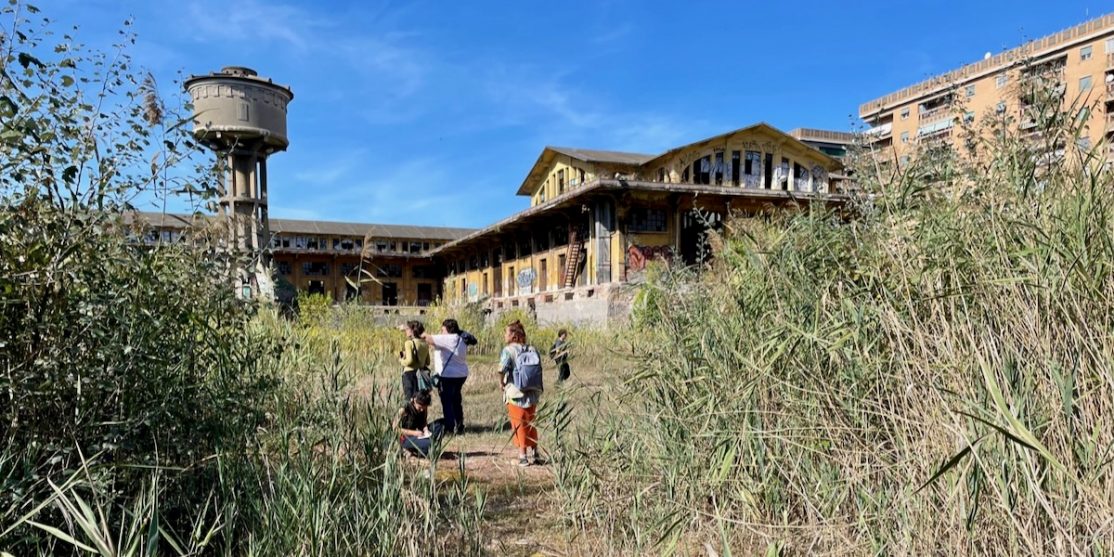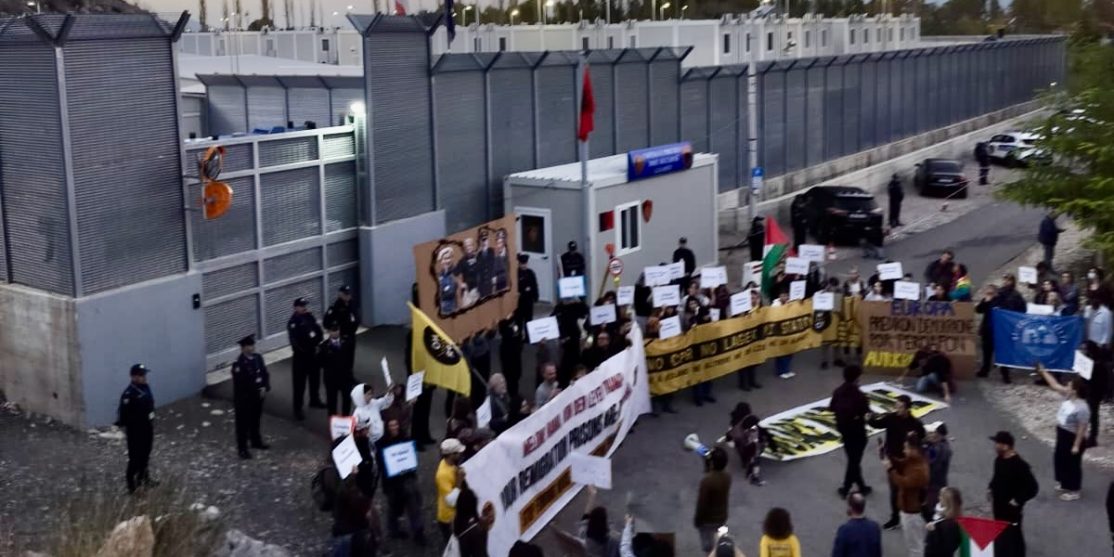EUROPA
Social strike: a challenge and an opportunity for the class struggle

This article, published on Rosa Luxemburg Foundation magazine, aims to explore the issue of the social strike […] as a practice, a challenge and a perspective starting from the Italian experience towards the following transnational perspectives of the struggles against austerity in Europe.
Genealogies
The demonstration and the strike of the last 14th November 2014 was, in first instance, against the Renzi’s labour reform that generalizes the condition of precariousness to all the labour force. This is a process that started in the ’90 when neoliberal labour reforms were implemented everywhere in Europe, but throughout the crisis it has been violently radicalized. For a brief genealogy of the social strike process we have to keep in mind two processes: the “Euro Mayday” and the student struggles against Bologna Process. Mayday has represented one of the most important space of organization and self-representation for precarious workers: a new precarious subjectivity appeared in the public scene, claiming universal basic income, new welfare and social rights. On one side, the material conditions of precariousness finally appeared as a common condition of the labour force in the post-fordism, no longer an exception but a new paradigm that could be extended to the whole of society. On the other side, the common condition of precariousness has created processes of subjectivization and new strategies and forms of organization.
At the same time, during the last decade when educational reforms based on the Bologna Process where implemented around Europe strong resistances spread out in all the universities. The Bologna Process started to establish a new educational regime, based on new hierarchies, differential inclusion and later new violent forms of exclusion from the educational system, strictly connected to the labour market conditions. The deskilling and the corporatization of schools and universities, the privatization and commodification of knowledge, the cuts in public budget are common aspects of these neoliberal reforms. All over Europe the relationship between this neoliberal educational reform and the precarization of the labour market has emerged in the struggles against the Bologna process. New practices of resistance became common tools for the student movements, such as blockades, manif sauvage, occupation of schools and universities, protests against curricular internships and the Book Block – used in Italy during the student protests, they have spread all over Europe and beyond. One of the unsolved problems has remained the connections between the different sectors of the fragmented labour force, as well as the relation with the Unions, still an open question during the struggles against austerity measures that exploded after 2011, when a radical shift in the management of the crisis has been made..
A neoliberal offensive against the labour force
The crisis in the European Union has been managed following two directions. The austerity measures and the imposition of a budgetary discipline that has been the first line of opposition for social movements, targeting the reduction of the public expenditure for health, education and social services. The other direction has been what we have called “a neoliberal offensive against the labour force”, quiet differentiate around Europe, but with some similarities looking at the welfare and labour reforms.
These reforms made in the name of “competitiveness” had the objective to redesign completely the industrial relations and the welfare systems established after the second world war. This trend started in the early ’90, and had a turning point with the German labour reform Hartz IV and nowadays is having a new shift, especially in the outskirts of Europe. The Italian Jobs Act completely revises the worker’s chart (Statuto dei Lavoratori) of 1970: liberalization of firing, of transfers, of job-tasks, possibility to control workers at distance, associated to an even more drastic precarization of contracts (e.g. a company no longer has to give a cause for using temporary contracts instead of permanent contracts). The reform is accompanied by a rhetoric on redistribution, innovation and growth, but also by some real fiscal decree with some redistributive aim (e.g. permanent workers will gain 80 euros [more?, HB] per month due to a discount on taxes).
This new narrative on redistribution and investments is present at a European level (e.g. the Juncker’s investment plan), intertwining with the national level (e.g. the reform on minimum wage in Germany). This new “expansive and permanent austerity” gives the possibility for a limited and controlled raise of salaries and for some redistributive policies, differentiated in time and space around Europe, opening new lines of segmentation and hierarchyzation of the labour force in the European space. For this it is important to read the labour and welfare reform with a European perspective, trying to analyse what kind of reconfiguration for the labour regime is being imagined and deployed at a global level. The crisis has been a favourable moment for the global capital to take advantage in the reconfiguration of the European space, using local, regional and national differences to construct new lines of exploitation and accumulation. In this sense the fluxes of internal migration in Europe – its new regime of control, with the first expulsions and the first line of resistances – is a paradigmatic example of this new reconfiguration. As well as the figure of the internal migrant – at one time included and excluded – could be a crucial subject for a new resistance against this new regime of exploitation.
From welfare to workfare: a new management of unemployment
Unemployment is being narrated as the first problem to face in Europe. In EU we count 25 million unemployed, the majority of them are young people, described as NEET (not in employment, education or training). This inactivity is one of the first enemies of the European neoliberal governance, that’s why the European Youth Guarantee – the programme to tackle youth unemployment – is a good example to show how the European governance is working in the crisis regime. The core is designed in Brussels, while the programme is implemented at a regional level and it has been requested by the majorities of the European youth ngo’s, as well as by the ETUC (European Trade Union Confederation). The YG is based on the “best practices” of the north-central countries, that have been successful in tackling youth unemployment. The Italian government’s implementation plan shows clearly who are the real beneficiaries of the Youth Guarantee: temporary work agencies, private training schools, governmental agencies, private companies. A young person is forced to work underpaid, meanwhile companies and training agencies are profiting of hisher work and gaining public bonus: a real new business on unemployment! The aim of this programme is not to create new jobs (as in a Keynesian perspective), but to enhance the individual employability, the supposed possibility of being employed in the labour market.
This kind of programme is completely inherent to the transformation of the welfare regime in workfare regime. Formally the aim is still redistribution of income, but actually the workfare regime is a technique of government and control of the new labour force (precarious workers, self-employed, unemployed). Following the same path, the role of the trade union and of collective bargaining has changed. The increasing transfer of a large components of welfare at corporate level has made the unions managers and providers of services, implying their identification with the company’s mission. The indirect wage has lost any remaining idea of mutuality and solidarity, becoming meritocratic and individualistic. Its administration is a source of profit for the unions, becoming much more similar to training agencies than organizations for collective bargaining.
What is a social strike?
During the crisis we have faced a general lowering in life standard, that has started to homogenize the social condition between different sectors of the labour forces: somehow becoming all working poor. Confronting this situation we are witnessing an extremely large diffusion of new [?, HB] forms of organizations and resistances: house occupations, conflicts to defend and reform the institutions of the welfare system, new practices of mutualism, fights for the commons and against privatization, but still these experiences are highly fragmented and divided. How can we overcome the divisions of the different sectors of labour market and society, connecting the struggles for salary with the struggles against privatization, for welfare and social rights? How to combine, extend and intensify struggles? How can the precarious workers organize themselves? What does “to strike” mean today? How can we unite the permanent workers, the precarious workers, the unemployed and the students in one strike? How can a strike be able to stop the accumulation of profit, to impose new negotiations, in one word, be effective?
These questions are the main challenges from which the social strike process started, connecting collectives of students from schools and universities, teachers and researchers, radical trade unions, precarious collectives, self-employed and autonomous workers, migrants, industrial and public sector workers. These different subjectivities, social and political organizations, opened a public space for common action discussion and struggle, with the aim to build up a large and horizontal social coalition, for recomposing the social fragmentation and fight back against the Jobs Act and the neoliberal attack. The process started in June 2014 and in the following months local laboratories – open public assemblies, spaces of discussion and organization – appeared in tens of cities, concrete experimentation to create new devices of organization for the multiplicity of the labour market conditions.
The 14th of November thousands of workers of the public administration, industrial and logistic sectors, were taking the streets with students, precarious workers, self-employed and migrant workers. Several demonstrations took place in more than forty cities, with blockades, pickets, viral communication and anti-Jobs Act propaganda actions during 24 hours. New creative forms where experimented to be part of the strike for those who do not have the right to strike, such as the net strike, practices of sabotage as well as simple communication action. Although the numbers of the strike were not massive in the public sector and among the permanent workers, and the major participation was made by students, 14th November was a successful experiment able to break the neoliberal narration on the crisis and revitalize the struggles against austerity. Around the issue of the organization of precarious workers much still has to be done, as well as on the connection between different sectors of the segmented contemporary labour force. The Jobs act was voted and approved by the Renzi’s government during the first week of December 2014. But the social strike process didn’t stop and went on calling for another national meeting, launching campaign against specific topics linked to the Jobs Act reform and decided also to mobilize together towards Blockupy, with the common slogan “Strike Ecb”, recognizing that we still face the urgency of opening new spaces of debate and struggles not only at the national level.
Towards a transnational social strike?
Even if the experience of the strike laboratories started as a response to a national reform – the Jobs Act – the European dimension of this attack has always been clear in the process of mobilization. Since the material and immaterial production and their value chain are globalised, the governance of the labour force acts on a global and regional scale, using a new spatialisation to differentiate and govern the labour force, where the control on mobility assumes a central role.
A discussion to build a possible platform of common claims around three general issues has started: a European minimum wage, a European basic income, a European welfare system that should be general and equal for all, adding the request for a minimum 2 years visa for migrants independent from labour and income. This is a first general platform that should be thought more as a base of discussion, rather than an established program. These issues are part of the heritage of the last struggles against precariousness, commons and migration, but at the same time they find a new effective significance within the crisis. The Basic income, for example, could be a possible way out to the new condition of poverty that is becoming a reality for more and more people in Europe, a possibility to escape from the blackmail of the precariousness and of the black labour market, a new way of reopening the discussion on the welfare system at a European level, to stop the social dumping that has become inherent to the European internal market.
What can be the common key-words understandable all around the continent, that can unite the different local struggles? During the XIX century and the beginning of the XX century the struggle for the 8 working hours per day has been a common battlefield all around the world, nowadays what are the new struggles that can unite us, in the era of the fragmented labour? This is the discussion we have started to open up thinking at the organization of a transnational social strike. A space of discussion, communication and organization around the theme of labour market and welfare system at the time of the permanent crisis of the financial capitalism. The fight against austerity and for a real democracy is at the same time a fight for equal and fair condition of life and work. The implementation of austerity measures it means cutting on public expenditure, privatization of the public sector and commodification of the commons. So our question should be how to relate the general fight against austerity with daily struggles against unemployment, precariousness and for the commons. For this is necessary to overcome the traditional division between economic and political, production and reproduction, or even more the new limit that is imposed on us between technical and political.
Nowadays any strike with the aim to stop the production needs to be thought beyond the national borders and labour conditions, and new space for struggles is needed to reshape the possibility for new and original social alliances where social, economical and political claims should not be divided, but reorganized in the form of a social coalition. We need to think our organisation beyond the differences between local, regional or European space, thinking a new scale for political action, able to face the violent attack of capitalism and rebuild new effective strategies for class struggle today.
For a deep analysis on the role of trade union: Alberto de Nicola and Biagio Quattrocchi “La torsione neoliberale del sindacato tradizionale e l’immaginazione del “sindacalismo sociale”: appunti per una discussione”. As well as all the discussion open on the website towards the Social Strike.
Originally published in german on
Rosa Luxemburg Foundation web magazinezeitschrift-luxemburg.de




